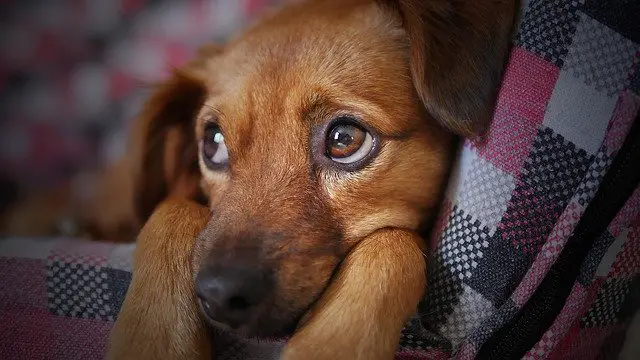
Like the human race, dogs have their philias and their phobias. We are well aware of their affectionate behaviors, their affections and their expressions of joy and gratitude. But we largely ignore that other less visible side, made up of fears, threats and manias. It is necessary to understand what phobias are, how they work in dogs and how to deal with them.
In the field of human psychiatry, a phobia is defined as the ” anguished and uncontrollable fear of certain acts, ideas, objects or situations, which is known to be absurd and approaches obsession.” If in a person the phobia is an irrational behavior, it is still much more understandable that this type of attitudes exist among our companion animals. How to explain our fear of flying or fear of the dark? Why are some people afraid of being locked in small places? Or why do they panic when faced with large spaces? Claustrophobia, agoraphobia, arachnophobia … There is a long list of human fears that carry the same suffix: phobia.
What are dog phobias?
Among dogs, a multitude of events can also generate behaviours that are incomprehensible to the naked eye in animals. Now, it is convenient to differentiate from the beginning what is fear in the animal and what represents a phobia.
- Fear is something easily explained, because it arises in the dog as a response dictated by its survival instinct to a situation that it considers threatening .
- The phobia , however, is an inordinate fear of situations that, objectively, do not represent a real threat. Various factors influence here, among which we can list having lived a negative experience under certain circumstances, genetic factors or a lack of early socialization.
Fears and phobias, however, present a very similar pattern of behaviour in dogs. How will we notice it? It can translate into aggressive acts , destructive gestures, loud barking, and unusual drooling.
Types of phobias and fears that a dog can have
The unknown and the allegedly threatening are two possible sources of phobia for the pet. Not all animals of the same species react the same to the same stimulus. But in the case of dogs, the origin of some of their abnormal reactions is proven.
- The noises. Loud noises that animals are not used, as the thunder in a storm, those of appliances or fireworks, are the source of a good percentage of their fears. This can be extended to situations where the animal lives on the street, with the noise of buses, police sirens or ambulances and all kinds of vehicles. It is proven that one of the objects most feared by the dog is the noise of the domestic vacuum cleaner. The same can happen with the washing machine, dishwasher or dryer.
- The vet. If a person sometimes feels rejection by being in a medical consultation, with more reason a dog, especially if the last time he visited the vet he was vaccinated or subjected to an inspection that has caused him discomfort. Reliving that situation is associated in the animal with an adverse experience that it does not want to experience again.
- The strangers. Some dogs do not allow themselves to be petted by strangers or they bark regularly when someone they have never seen before comes to the house. For this reason, it is important to socialize the animal and get it used to the presence of all kinds of people since it is a puppy. When it is grown, it is a risk to force it against its will to approach strangers, as it could turn against its owner.
- Loneliness. There are dogs that do not tolerate staying home alone when their owner goes out and closes the door. In some cases they show destructive behaviour and bark and bark, causing the usual complaints from neighbours.
- The stairs. There are dogs that approach the steps of a simple ladder with great slowness and caution. Others even freeze, as if an invisible barrier prevented them from advancing. It is a fear that comes from their puppy stage , in which they surely did not go up or down steps.
What to do if your pet suffers from them?

If the manifestations of fear in the dog are absolutely disproportionate, we will be the first to realize it. And it will be time to take the animal to a veterinarian for advice on how to solve the problem and in case it needs therapy. In any case, we will never fall into despair or abuse, no matter how ridiculous their fear may seem to us. At all times, we must transmit peace and tranquillity to the pet.
If fear or phobia does not set off our alarms, we can try to correct these situations by slowly and progressively accustoming the dog to situations that cause stress. This process is slow and gradual and we should not subject the dog to unnecessary pressure, because we will accentuate its imbalances even more.
Desensitization, also called controlled exposure, works in the canine environment in the same way as it does in humans. The element that disturbs the animal’s habits (for example noise) is gently introduced in such a way that the dog barely notices it at first. The strategies that the owners can follow are very varied depending on the phobia that the dog feels. But always in no rush.
The same thing happens with visits to the vet. We can take you to the consultation without necessarily having to be examined. Or in dealing with strangers, we can reward the animal with a stimulus, if it behaves well with a person whom it has never seen.
Finally, it is vitally important to avoid the technique known as the “flood” with dogs, which is to subject them to everything that scares them the most every day in order to get used to it. This strategy can work with people, but never with animals because they do not have the ability to rationalize the situation and discern.
